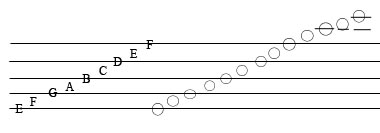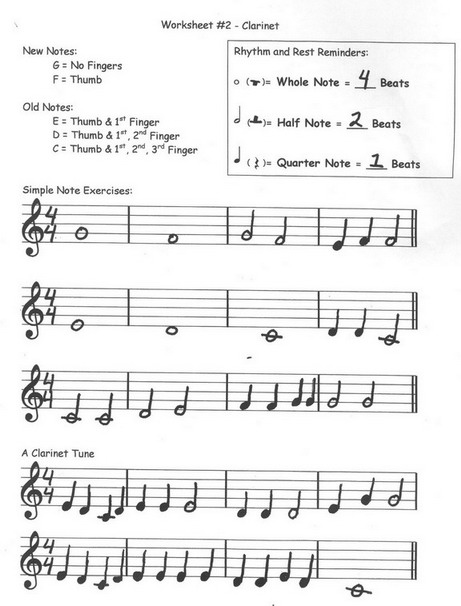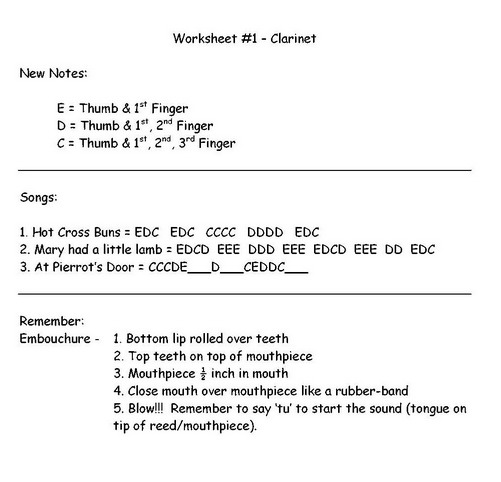
Lesson Plan #1 can be opened or downloaded as a Microsoft Word file by clicking or right-clicking in this link.
At the bottom of this page, you can see Worksheet 1 and Worksheet 2. These worksheets are given to the students in their second and third lessons, respectively.
| Patrick Hait Clarinet Lesson - Reading Music |
|
| Grade Level: | 4th grade beginning band. This should take place at their 3rd or 4th lesson. |
| Approximate Time: | 1 class period (40 minutes) |
| Objective: | By the end of one class period, the students will be able to read the notes C D E F G, consisting of whole, half and quarter notes off of a staff. Students will also add F and G to their bank of notes. |
| Standards: |
MENC 1 (Singing alone and with others) MENC 2 (Performing on instruments, alone and with others) MENC 5 (Reading and notating music) NY 1 (Creating, Performing and Participating in the arts) NY 2 (Knowing and using arts materials and resources) |
| Materials: | White Board Handout “Worksheet 2” |
| Procedure: |
|
| Evaluation: | There are several areas for assessment built in to the procedure of the lesson plan. If it appears that students are having difficulty with remembering note names or durations, modifications to the lesson should be made. |
The image below shows E G B D F then F A C E then the notes drawn on the board. The notes from E to high F were used in the quick quiz, then the students are shown that the notes keep going up using ledger lines. The students are then shown the the ledger lines can also show lower notes.

The image below shows 'Worksheet 2'. This is what the student will practice the week following the introduction of notation.

The image below shows 'Worksheet 1'. This is what the student practiced in the week leading up to this lesson.
